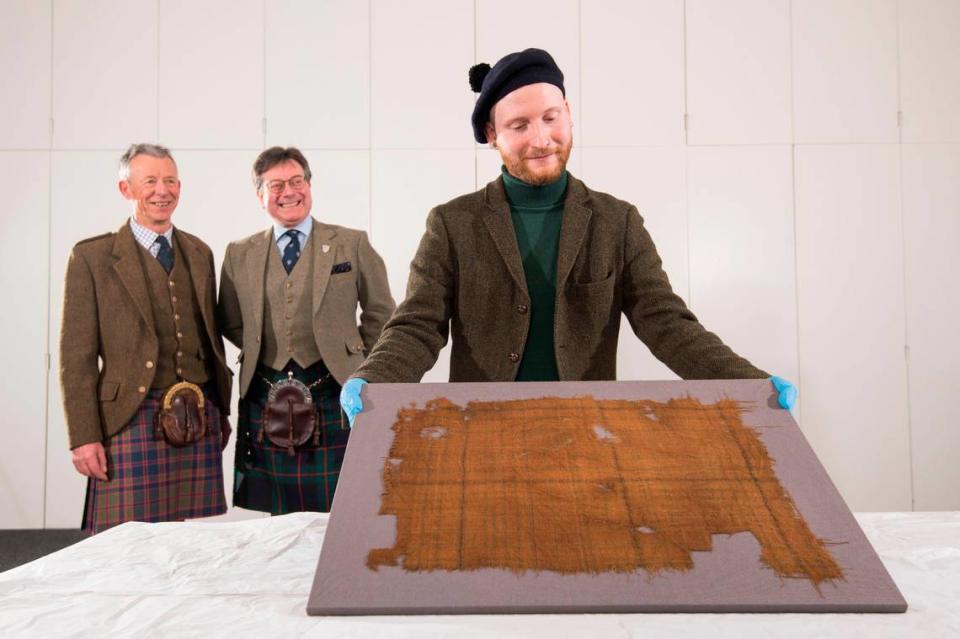Striped fabric found 40 years ago in Scottish bog turns out to be a historic discovery
There might not be anything more iconic in Scotland than plaid.
Made from centuries of history and family lineage, the striped fabric, or tartan, tells the story of Scots past, and each pattern is given a name for the clan that wears it.
Forty years ago, a piece of tartan was found in a peat bog, or mossy wetland, in the Scottish highland region of Glen Affric, according to a March 26 release from the V&A Dundee museum.
Now, that fabric has been scientifically tested to determine its age, and the findings were historic.
The Glen Affric tartan, measuring about 22 inches long and 17 inches wide, is over 400 years old, making it the oldest tartan ever found, officials said.
The Scottish Tartans Authority began the process of dating the tartan about six months ago, commissioning dye analyses and radiocarbon testing.
The tartan had stripes of green and brown dye, possibly with some red and yellow. Scientists from National Museums Scotland used high-resolution digital microscopy to identify the individual colors in the fabric. Then, they analyzed the dye and found that a combination of indigo and woad was used to create the green color.
The researchers also found there were no “artificial or semi-synthetic dyestuffs” in the fabric, meaning the colors were dyed before the 1750s, according to the release.
Radiocarbon dating was used to narrow the time frame to somewhere between 1500 and 1655 A.D., but researchers believe that the window between 1500 and 1600 A.D. is the most likely.

“In Scotland, surviving examples of old textiles are rare as the soil is not conducive to their survival. As the piece was buried in peat, meaning it had no exposure to air and was therefore preserved,” Peter MacDonald, head of research and collections at The Scottish Tartans Authority, said in the release.
“The tartan has several colours with multiple stripes of different sizes, and so it corresponds to what people would think of as a true tartan,” MacDonald said.
Previously, the Falkirk “tartan” was dated to the third century, but with a simpler checkered pattern that was woven from yarn that hadn’t been dyed, researchers and historians do not consider it a “true tartan.”
The Glen Affric tartan “is likely to date to the reign of James V, Mary Queen of Scots, or James VI/I,” John McLeish, chair of The Scottish Tartan Authority, said in the release. “There is no other known surviving piece of tartan from this period of this age. It’s a remarkable discovery and deserves national attention and preservation.”
The tartan will be shared with the rest of Scotland on display for the first time at the V&A Dundee museum’s tartan exhibit opening on April 1.

The Glen Affric tartan will be the oldest piece included in the exhibit of more than 300 pieces of Scottish history.
The exhibit “examines tartan’s universal and enduring appeal through iconic and everyday examples of fashion, architecture, graphic and product design, photography, furniture, glass and ceramics, film, performance and art.”
Abandoned mine — turned Roman rubbish dump — reveals life in France 1,800 years ago
Buc-ee’s the beaver: Big, toothy prehistoric species named after beloved Texas chain
Meat-eating panda relatives — one with monstrously large teeth — roamed Earth, study says
Woolly mammoth meatball? Australian food company reveals extinct meat grown in a lab

 Yahoo Movies
Yahoo Movies 
